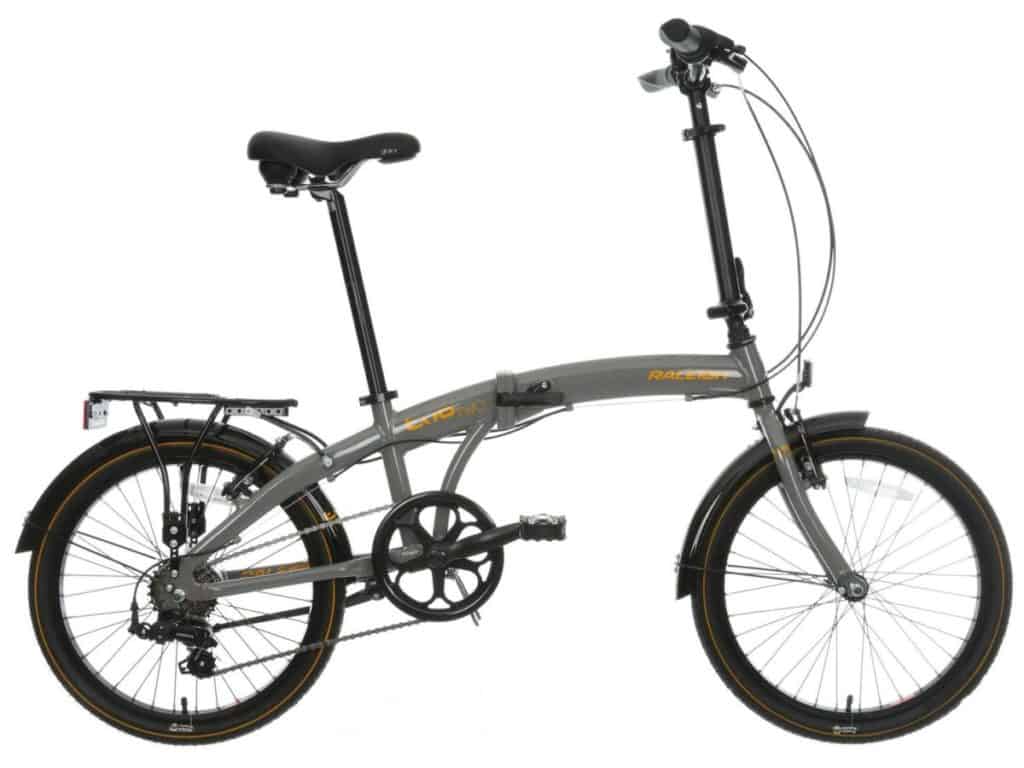
Are you thinking of shifting to bike commuting for its environmental and health benefits? Well done! We are right here with you!! But choosing the perfect bike for your commute requires considering an array of factors like your budget. Another important question is how much a commuter bike should weigh.
A good weight for a commuter bike is between 20-30 lbs (9-15 kg), but it depends on many factors like the materials used in manufacturing the bike, the main components, and the biker’s bodyweight. Aluminum and carbon fiber are the lightest materials for commuter bikes.
In the rest of the articles, we’ll touch on a commuter bike’s main components that add to its weight. We’ll also go through different materials used in making bikes and how they contribute to the bike’s overall weight.
Why Is Bike Weight Important?
Your cycling experience can change according to your bike’s weight. Handling a heavy bike needs expending extra energy.
Imagine going into the office exhausted after a long gruelling ride through traffic. It’s even more exhausting if you have to carry the bike up the stairs into the office or put it on a bus rack.
A heavy bike can also affect your performance on the road. There’s no question that the extra weight can make the bike sluggish. For example, if you have to stop at many red lights or drive through high-traffic areas, a heavy bike can really slow you down.
That’s why a bike’s weight is crucial in your commuter rides. It’s even more important when you realize the weight you handle is not limited to the bike’s weight itself.
Factors That Affect Your Performance and Speed
There’s no single agreed-upon weight for bikes. Given the variety of materials and styles of bikes in the market, the average weight range is between 20 to 30 lbs (9 to 15kg). Some bikers might be okay with having a heavier bike while others put their comfort first since even a 5-pound reduction can help them feel better while riding.
More often than not, it’s not the weight of the bike itself that causes problems. It’s what you carry along the way that adds those extra pounds to your commuter rig and leaves you panting while riding up a steep street.
Consider the following factors that also affect your performance and speed.
Your Body Weight

The cyclist’s body weight is just as important as the bike’s. If you’re heavy, you’ll have to expend more energy than a fit cyclist. But think twice before jumping to the store and changing your bike to a lightweight one, especially if you have a tight budget.
If both you and your bike are overweight, it’s better to shed some pounds off your own body than change the parts to more lightweight ones.
According to a study, even a 30% reduction in the bike’s weight doesn’t lead to faster commute times. Instead, the study suggests a reduction in the cyclist’s body weight can be more beneficial.
After all, getting fit was probably one of your reasons for going to work with a commuter bike. So, it’s better to use the chance and slim down!
Here, we break down bike commuting and weight loss into more detail to help you on your way.
Bags and Accessories
Do you carry bags, water bottles, or equipment? Because commuter bikes have extra space for front and rear baskets and pannier bags, luggage can add extra weight to them.
Saddlebags, rear racks, and backpacks can all add extra weight to the bike. For example, you should consider if you need to take your laptop to work every day. You also need headgear, bike locks, and repair kits.
Major Parts of the Bike
The major components of a bike make up the main weight of the bike. There should be a good balance between these components, like wheels, spokes, frames, fenders, rims, saddles, and others in terms of weight and sturdiness. Sometimes, you can’t sacrifice strength for weight because the components are crucial for your ride’s safety.
- Frames are the most important parts of a bike. So, you should look for strong frames, no matter the weight. Don’t sacrifice safety and strength for weight because the lighter the frame, the more delicate it will be.
- Wheels play an essential role in the overall weight and balance of the bike. The cyclist’s body weight can also determine the wheels’ size because they absorb most of the weight.
- Spokes and rims are also essential in balancing the weight by distributing it. So, if you’re heavy, opt for a bike with sturdy rims and spokes.
- Suspensions and brakes need to be strong and durable since they make the bike comfortable and safe. The total weight of the bike determines your safe braking distance. The heavier the bike, the longer the braking distance. Especially for a commuter bike, having strong brakes is a must since you ride in urban high-traffic areas.
Materials That Can Affect Bike Weight
Frame materials make huge differences in bike weight. But each of these materials suits different purposes as they have their own pros and cons. That’s why you have to create a trade-off between weight and strength based on your commuting needs.
- Steel: Most types of steel are mixed with chromium and molybdenum, which makes it more lightweight. The name of this material is Chromoly, which is the main material used in steel frames. Compared to traditional stainless steel frames, the modern Chromoly tubing is less rigid and springier. Steel frames are famous for being durable, so it’s a good choice that has durability and weight.
- Aluminum: Aluminum is a popular material in making bike frames—thanks to its lightness and lower density than other materials like steel. It also doesn’t rust, which is a big advantage compared to steel. But since it’s less dense, it needs larger tubing to add to its strength, creating increased stiffness, which makes riding difficult.
- Titanium: It’s an ideal material in terms of being light and durable. But it’s not as dense and tough as steel. So, if you’re heavy, you can choose stiffer frames with large diameter tubes to accommodate your weight. However, one of the main disadvantages of titanium is its high price, making it a less favourable option if you have a limited budget.
- Carbon fiber: As one of the most expensive materials, carbon fiber contains nonmetallic graphite fiber cloth and epoxy resin. It’s highly stiff, strong, and lightweight.
Best Kinds of Bikes for Commuters
In addition to weight, there are many other factors you need to consider before picking a commuter bike. A lightweight bike is the first option you consider to choose, but distance, terrain, and the type of your journey affect your choice of the bike too.
Here are the best commuter bikes for different purposes.
General Purposes: Hybrid Bikes
If you’re a beginner and plan on commuting, a hybrid bike is the best choice for you. It falls within the ideal weight for commuters with an average weight of 24 to 28 lbs (12 to 14 kgs).
As a combination of mountain and road bikes, it has the best of both worlds. With its versatile designs, accessories, and features, you can use it for other purposes, like road touring or mountain biking.
Its upright position is another advantage that comes in handy while you’re in traffic.
Multimodal Transport: Folding Bikes

If your journey involves changing different modes of transport, you should look for the lightest and most convenient option. These bikes fold into small packages that you can carry anywhere along your journey.
With these bikes, you have to make compromises since they have small wheels and aren’t the fastest. If you go for one with bigger wheels, it won’t fold as compact. But easy storage and convenience could trump comfort and power if your commute route doesn’t involve a single biking path.
Check out our article on using folding bikes for commuting by following this link.
Convenience-Seekers: Singlespeed Bikes
These are perfect for people who want a hassle-free ride across street roads. They’re low-maintenance options with a single-gear drivetrain.
But it might not be a perfect choice for beginners as there’s no freewheel. It’s a mechanism that moves the bike forward without you pedaling. So, it means that while you’re on a fixie, you’ll have to be pedaling all along.
If your route includes steep paths, riding a single-gear bike isn’t the best option for you, so consider your commute route before buying a bike.
Wrapping Up
Having a lightweight commuter bike can hugely improve your ride in urban areas. The ideal weight for a commuter bike is 20 to 30 lbs (9 to 15 kg). But many other factors add to the weight of your bike and slow you down. Your own body weight, as well as bags and accessories, significantly add to the weight you need to handle.
Go for lightweight materials like aluminum or carbon fiber to make sure your bike is as light as possible, giving you the freedom to add more weight in accessories and luggage.
Sources
- Bike Exchange: A Complete Guide to Commuter Biking
- The ProCloset: Does Bike Weight Really Matter?
- Road CC: 8 Cheap Ways to Get a Lighter Bike
- Survival Techshop: Average Bike Weight (with 33 Examples)
- Bmj: Bicycle weight and commuting time: randomised trial
- Mission Bicycle: Oversimplified: Freewheels
- Good Cycles: THE DRIVETRAIN
- Metal Supermarkets: WHAT IS CHROMOLY?
- Live Science: Facts About Molybdenum
- Britannica: Chromium


